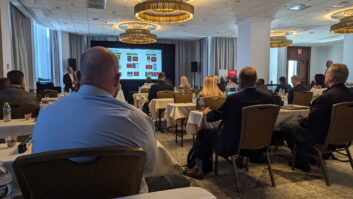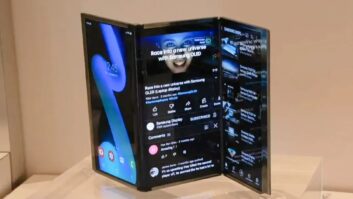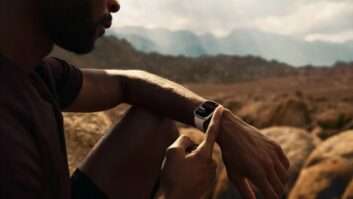
Online advertising can be a secret weapon or a troublesome burden in a retailer’s marketing arsenal.
Get it right and you achieve immediate mass reach to targeted consumers; convey a compelling reason to buy from your store; tap into useful analytics; and increase calls and traffic to your store (not to mention, boost your sales).
But get it wrong and you get lost in a complicated web that does nothing but zap valuable time away from running your business.
The sheer variety of platforms and types of online ads available is the first decision-making hurdle for retailers placing their own online ads. Where do you begin on the Google Ads (previously Google AdWords) advertising platform? What type of Facebook advertising is best for your business, if any?
Then, there’s creating the ads themselves: determining the imagery and crafting the messages that capture attention and generate clicks, let alone creating all the various sizes of ads to display properly on all screens. Even after the creative is complete, there’s deciding and implementing the strategy. When will they run and who will they target? Which keywords will you bid on? And more.
Then, there’s the “destination” for the ads: developing a captivating landing page that clearly conveys value and showcases your products with a clear path to purchase. And when you’re ready to launch, be prepared to carefully align the timing of landing page availability with the start of the corresponding ads in your campaign. Upon launch, the daily monitoring of your budgeted ad spend, as well as analytics to measure how well the ads are performing, become another job entirely.
In working with thousands of retailers over the years to help them build successful digital strategies, we see a greater need than ever for an automated, all-in-one solution that takes the guesswork out of winning online shoppers. Competing and thriving in the digital age means showing up where your customers are looking: on apps, computers, Google searches, social media … essentially all things mobile. And that’s just the beginning.
See: Eight Holiday Tips For Independent Dealers
With this in mind, whether you’ve already added online advertising to your digital marketing efforts or you’re wondering where to begin, here are seven insights we’ve learned while helping retailers along their digital marketing journeys. For the purpose of this article, we’ve focused on advertising across the Google Ads platform, as we find it to be the most important platform to optimize your performance across initially.
1. First and foremost, have an effective web presence.
It’s worth repeating: gone are the days of bulky phone books and driving around from store to store, relying solely on salespeople for information on home purchases of mattresses, TVs, dishwashers and sectional sofas. Today’s consumer goes online first and is doing more research on their mobile device. The purchase decision is made prior to going into the store, so for independent retailers the need for an effective website is job No. 1 before an online campaign can even begin.
What defines an “effective” web presence? Three key things: your website must include useful information, from products to pricing; fast page load times (less than 10 seconds to appear on mobile, 24 seconds to fully load); and online reviews about your store, as well as popular third-party review aggregator sites like Google, Facebook and Yelp. If you don’t have a professional and informative website to send consumers to when they click on your ads, paying for those clicks is a waste of your advertising budget.
2. Apply a long-term approach.
Create a budget just as you would with traditional advertising. When starting a digital ad campaign, give it a minimum of three to six months as the algorithms need a learning period to effectively measure results over time. As the Google Ads platform gathers more data about your ads through machine learning, they will optimize the delivery of your ads, increasing their performance over time.
3. Create a comprehensive strategy.
One smart way to do this is to think about “where” your potential customers are in the sales cycle. Then create different campaigns that build brand awareness, generate leads, increase sales, and/or encourage calls and walk-ins to your store. Reaching consumers purchasing under duress requires an entirely different message than those redecorating an entire room over time. There is value in both building brand awareness and generating calls and orders about a specific promotion, but the path to each is through very different strategies.
4. Start with the search network.
For independent retailers new to online advertising via Google Ads, the search network is the best place to start. Google’s search network reaches consumers who are actively looking for what you sell and have a high intent to buy. It’s no surprise Google data shows retailers spend more on search than other types of campaigns.
5. Give display a try too.
The Google display network is another form of digital advertising popular among retailers. It consists of more than one million news sites, blogs, articles and various websites that accept text, banner and video ads from Google Ads. Rather than appearing when a prospective customer is actively searching, ads that run on the display network appear on any site being viewed by a targeted prospect. For each piece of banner content you want to run, we recommend creating an ad in at least the 10 most popular sizes. If you don’t have the right size available to serve, the inventory where your ad can show will be limited.
6. Don’t forget landing page quality!
When it comes to online advertising, the “destination,” i.e., landing page, is key. Creating impactful, relevant ads that result in high click-through rates must also have effective landing pages (particularly when running on the display network, since consumers clicking on these ads tend to be further from purchase than those clicking on text ads). The landing page experience for the prospective customer must be clear and concise, with minimal steps, i.e., clicks, along the conversion process. The more specifically connected you can make the destination material with the ad they clicked on, the more value you can generate from each click.
7. Work with experts.
To best take advantage of all Google Ads strategies and maximize your ad spend, work with experts in the field of digital marketing. Working with professionals who have a sophisticated knowledge of digital advertising will also save you time and resources, so you’re not taken away from the day-to-day of running your business.
When handled expertly, online advertising should be one part of a greater whole of your integrated digital marketing efforts. Use it to promote and keep your store top of mind online!













